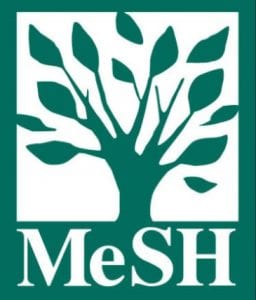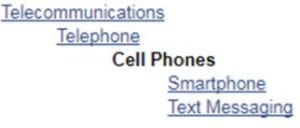Medical Subject Headings (MeSH)
By ucylsjb, on 26 January 2018

(C) US NLM
Whether you are new to database searching or a seasoned researcher, a concept that you will invariably come across is the Medical Subject Heading (MeSH). What is a MeSH heading, and how can one help you to find what you’re looking for? A MeSH heading is simply a way to describe the topic of an article in a consistent language. Think of one as electronic post-it note attached to an article—find the post-it note, and you’ll also find its associated article. An article that is tagged with a MeSH heading, is said to be indexed for that heading. Of course, it is common for articles to be indexed with a number of different MeSH headings. The National Library of Medicine (US) sets the standards of MeSH, and there are thousands of different MeSH headings—they are also revised annually to reflect changes in knowledge.
MeSH headings sit in a tree-like hierarchical relationship to one another. Imagine that I am researching the safety of pedestrians who use mobile phones. The first thing I want to do is to see if there is a MeSH heading for my concept of mobile phones—remember that if we find one, we will also find all articles to which it is attached. So, I ask the database if it contains a MeSH heading for ‘mobile phone.’ Now, there are different ways we do this depending on the database used, but for now all that matters is that a heading does exist.[i] It is called Cell Phones.
Why did the database find Cell Phones when we asked it to look for ‘mobile phone’? The answer is all to do with the content of articles (title, abstract, and the body) and what causes a MeSH heading to become associated with a particular article. Each MeSH heading has a number of triggers called entry terms which indexers use to decide which MeSH terms to index an article with. For Cell Phones, the entry terms include ‘cellular phone’ and ‘mobile phone.’ A searcher entering either of these terms will retrieve the same MeSH heading Cell Phones.[ii] This makes a lot of sense, as we can easily imagine UK and US articles using different words to refer to the same thing.

MeSH Tree for Cell Phones
Cell Phones also demonstrates the tree-like hierarchy of MeSH headings well. It is the ‘parent’ of two other MeSH headings, Smartphone and Text Messaging. These are narrower MeSH headings in their relationship to Cell Phones because they provide a more detailed exploration of the broader term, Cell Phones. When searching databases, you can select as many or as few MeSH headings as you wish.[iii]
MeSH headings are a fundamental part of searching biomedical databases. When used correctly, they are a powerful tool to help you construct excellent search strategies to not only impress your friends (maybe!), but also to build your own research upon a solid foundation.
[i] The databases MEDLINE (including PubMed), PsycInfo, and CINAHL all incorporate into their search functionality MeSH headings.
[ii] In Ovid (MEDLINE), for example, clicking on the word scope next to a MeSH heading will reveal its entry terms.
[iii] In Ovid (MEDLINE), for example, clicking the check box explode will select both the parent term, and all its narrower MeSH headings.
 Close
Close

